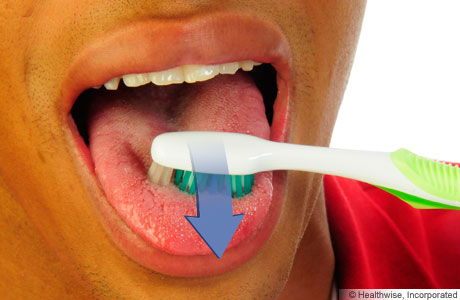Jump to
What kind of toothbrush should I use to brush my teeth?
Use a toothbrush with soft, rounded-end bristles and a head that is small enough to reach all parts of your teeth and mouth. Replace your toothbrush every 3 to 4 months.
An electric toothbrush may work better than a regular toothbrush. Ask your dentist which type of electric toothbrush to use.
How often should you brush and floss your teeth?
Brush your teeth 2 times a day, in the morning and at night. And floss at least once a day.
- Use a toothbrush with soft, rounded-end bristles and a head that is small enough to reach all parts of your teeth and mouth. An electric toothbrush may work better than a regular toothbrush. Ask your dentist which type of electric toothbrush to use.
- The type of floss you use isn't important. Choose the type and flavor you like best.
- Use a fluoride toothpaste. Some of these toothpastes also offer tartar control. It may help slow the formation of hard mineral buildup (tartar) on the teeth.
- Replace your toothbrush every 3 to 4 months.
Brushing the tongue

Brush your tongue from back to front. Some people put some toothpaste or mouthwash on their toothbrush when they do this.
Brushing your tongue helps remove plaque, which can cause bad breath and encourage bacteria growth.
©2011-2026 Healthwise, Incorporated
The content above contains general health information provided by Healthwise, Incorporated, and reviewed by its medical experts. This content should not replace the advice of your healthcare provider. Not all treatments or services described are offered as services by us. For recommended treatments, please consult your healthcare provider.
